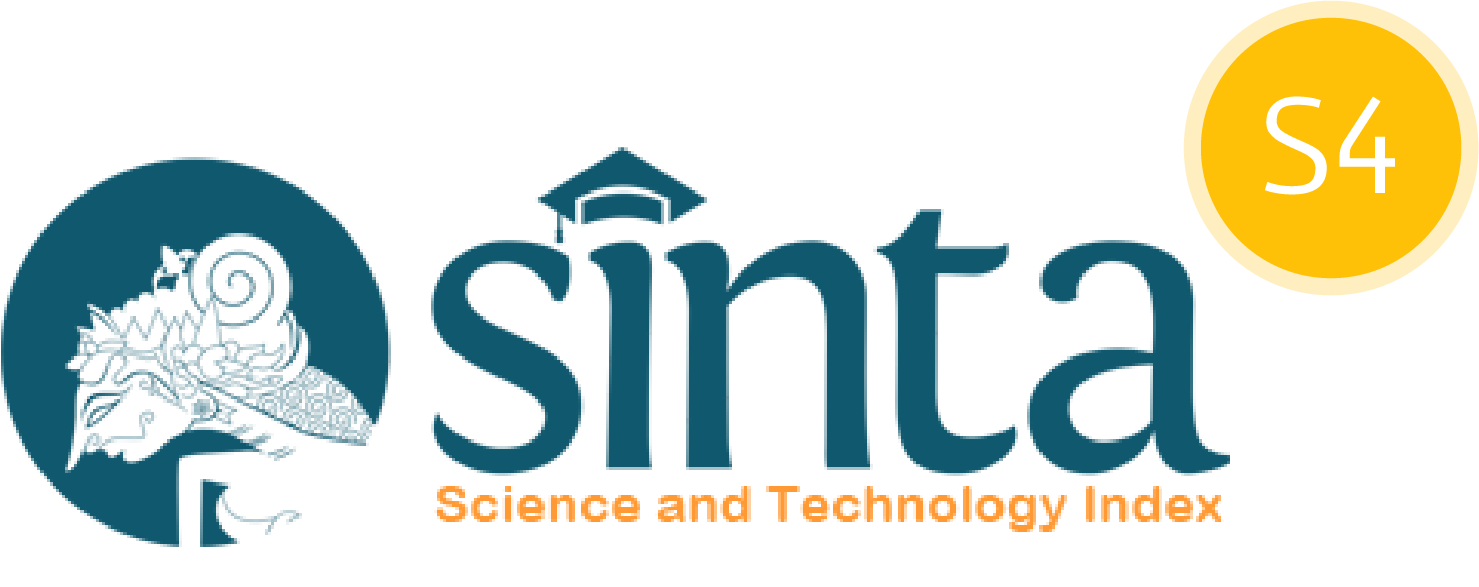Animasi Interaktif Klasifikasi Jangkauan Dan Topologi Jaringan Komputer Berbasis Android Sebagai Media Belajar
DOI:
https://doi.org/10.31294/coscience.v1i2.466Keywords:
Construct 2, Interactive Animation, Computer NetworksAbstract
Classification of range and topology has its own types and characteristics. There are many types of outreach classifications and topologies, as well as process methods in learning in schools that are less interactive so that students are bored in the learning process, especially for students of SMK Computer and Network Engineering Department. In practice, making LAN cables requires equipment that is quite expensive, making it difficult to carry out these practical activities outside of school. So that students find it difficult to develop their abilities, especially in the vocational field. With current technological developments, of course, it can be used in the world of education, one of the uses is by making educational applications that can provide a new atmosphere in learning. Interactive animation can be a solution in overcoming the practice of making LAN cables and an explanation of Network Topology. This interactive animation was made using Construct 2 software, developed using multimedia development methods and data collection techniques in the form of observations, interviews and literature studies. The purpose of making interactive applications is so that students can understand the range classification and topology well, and can practice installing LAN cables through interactive animation simulation software as a substitute for school facilities.
References
Armansyah, F., Sulton, S., & Sulthoni, S. (2019). Multimedia Interaktif Sebagai Media Visualisasi Dasar-Dasar Animasi. Jurnal Kajian Teknologi Pendidikan, 2(3), 224–229. https://doi.org/10.17977/um038v2i32019p224
Damayanti, D., Akbar, M. F., & Sulistiani, H. (2020). Game Edukasi Pengenalan Hewan Langka Berbasis Android Menggunakan Construct 2. Jurnal Teknologi Informasi Dan Ilmu Komputer, 7(2), 275. https://doi.org/10.25126/jtiik.2020721671
Haris, A., & Putra, M. Y. (2020). Animasi Interaktif Pengenalan Anggota Tubuh Menggunakan Bahasa Arab Pada SD-IT Roudhotul Jannah Bekasi. 4(2), 145–154.
Herawati, A., Wahyudi, W., & Indarini, E. (2018). Pengembangan Media Pembelajaran Bangun Ruang Berbasis Discovery Learning dengan Construct 2 dalam Meningkatkan Kemampuan Pemecahan Masalah Matematika. Jurnal Ilmiah Sekolah Dasar, 2(4), 396. https://doi.org/10.23887/jisd.v2i4.16157
Kusumayanti, D., & Astuti, C. C. (2021). Android Based E-Module Development on Computer Learning and Basic Networks Class X Tkj Smk Ar-Roudhoh. JICTE (Journal of Information and Computer Technology Education), 5(1), 24–30. https://doi.org/10.21070/jicte.v5i1.1335
Luhulima, D. A., Degeng, I. N. S., & Ulfa, S. (2017). Pengembangan Video Pembelajaran Karakter Mengampuni Berbasis Animasi Untuk Anak Sekolah Minggu. Jurnal Inovasi Dan Teknologi Pembelajaran, 3(2), 110–120.
Maiyana, E. (2018). Pemanfaatan Android Dalam Perancangan Aplikasi Kumpulan Doa. Jurnal Sains Dan Informatika, 4(1), 54–65. https://doi.org/10.22216/jsi.v4i1.3409
Nurhalimah, S. R., Suhartono, S., & Cahyana, U. (2017). Pengembangan Media Pembelajaran Mobile Learning Berbasis Android pada Materi Sifat Koligatif Larutan. JRPK: Jurnal Riset Pendidikan Kimia, 7(2), 160–167. https://doi.org/10.21009/jrpk.072.10
Rosmaidah, I., & Destiana, H. (2017). Perancangan Animasi Interaktif Belajar Mengenal Huruf Hijaiyah Pada TKQ Al-Khoiriyah. Jurnal Teknik Informatika, ISSN:2442-2436, III(1), 100–105. https://ejournal.bsi.ac.id/ejurnal/index.php/jtk/article/download/1350/1098
Saputra, P. A., & Retnoningsih, E. (2020). Animasi Interaktif Pengenalan Negara ASEAN Menggunakan Metode Multimedia Development Life Cycle. Journal of Students‘ Research in Computer Science, 1(2), 153–164. https://doi.org/10.31599/jsrcs.v1i2.406
Downloads
Published
Issue
Section
License
Copyright (c) 2021 Rezki Muhammad, Muhammad Ifan Rifani Ihsan, Diah Ayu Ambarsari

This work is licensed under a Creative Commons Attribution-NonCommercial-ShareAlike 4.0 International License.


















